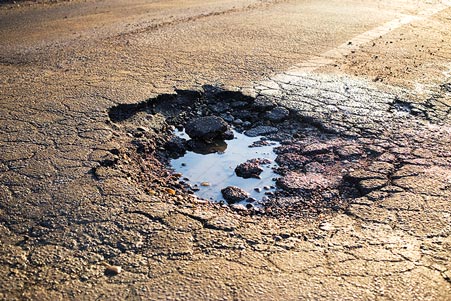
Sinkholes and Property Damage: What Homeowners Need to Know
Friday, March 23, 2018
Many homeowners think about the risk to their home from fire or floods. In Florida, it may be necessary to also prepare for a sinkhole. The damage from this type of natural disaster is not officially tracked, but the U.S. government estimates that sinkholes cause approximately $300 million in damage per year and believe that is a conservative estimate. Here is what you should know.
How it Happens
Risk areas are anywhere soluble bedrock is located. When there are high levels of gypsum or limestone in the earth, the stone is dissolved over time by the water that runs through the ground. The soil becomes soft and unstable, and the gaps in the earth become filled with water. The surface can collapse into these softened areas and result in a sinkhole.
Where They Occur
A sinkhole can technically occur anywhere that has the right conditions. In the United States, the most common states with sinkhole issues are Florida, Texas, and Alabama. Also affected are Missouri, Kentucky, Tennessee, and Pennsylvania. Florida is the most vulnerable because it sits on top of so much limestone.
The area that encompasses Hernando, Hillsborough, and Pasco counties is known as “sinkhole alley”. Most of the insurance claims in the state of Florida for sinkholes come from this region. This does not mean that all homes in these counties are at risk or that living outside the counties will prevent a problem.
What to Watch
The easiest way to stay safe from a sinkhole is to identify potential problems early. If items in the yard have newly exposed areas around their base or if they begin to tilt or sag, it could be a sign of a sinkhole. New depressions in the ground where water collects or circular areas where the grass or other vegetation has mysteriously died are also of concern.
Inside the home, the change in the ground could shift the house and keep doors and windows from opening properly. There may be new cracks in the walls or the foundation of the home, or gaps could suddenly appear between concrete blocks. The amount and size of the damage would be more than the occasional hairline cracks expected as houses settle after construction.
How to Respond
A small depression in the yard, away from any structure or road can usually be managed by the homeowner. The state of Florida recommends monitoring the hole and filling in the depression if it remains the same size. First, pour concrete into the bottom to create a solid base, add sand with a high level of clay, and finish it with a layer of pure sand and topsoil.
It is not uncommon for the hole to sink a small amount after filling and for more topsoil to be needed. Contact emergency personnel if a sinkhole continues to grow, is more than three feet in diameter, or if it is close enough to threaten a structure or road. It is also important to contact the insurance company that handles the homeowner’s policy.
Do not think that the easiest way out of the situation is to sell the home. The law requires anyone with knowledge of a sinkhole on the property to disclose the information at the time the home is listed for sale. Keep any documents relating to any repairs to the yard or the home for sinkhole damage in case of a future sale.
Sinkholes are as frightening as they are potentially dangerous. All Florida homeowners should make certain they are insured for this type of natural disaster. The People’s Choice Public Adjuster makes certain that every homeowner gets the settlement they need to repair their property securely. Contact us for more information or for help with a claim.
Latest Articles
- The People’s Choice Public Adjusters Hurricane Michael Storm Tips
- How To File A Water Damage Claim
- Mold Control Before And After A Hurricane
- Tips for Filing a Vehicle Vandalism Claim
- Can I Be Reimbursed If My Living Expenses Increase After Home Damage?
- 3 Early Signs of Problems With Your Insurance Claim
- Roof Damage? A Public Insurance Adjuster Can Help
- Sinkholes and Property Damage: What Homeowners Need to Know
- Five Things That Make the Insurance Claim Process Easier

